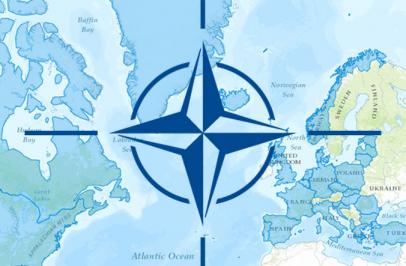Shielding the Arctic from NATO’s return to Territorial Defence

See The Simons Foundation's Arctic Security Briefing Papers for information on military policies and practices in the Arctic region by Ernie Regehr, Senior Fellow in Arctic Security and Defence at The Simons Foundation.
Shielding the Arctic from NATO’s return to Territorial Defence
NATO Defence Ministers have signalled their intention to create a new north Atlantic Command, one with Artic operations also in mind. Along with current deployments in the Baltic states and Poland, intensified air patrols on its eastern and northern flanks, European ballistic missile defence, and a new logistics command for Europe, this new command reflects NATO’s shift from out-of-area missions and back to the Cold War priority of defending the territories of NATO member states. Whatever that shift means for Eurasian security writ large, alliance-dominated territorial defence preoccupations in the Arctic would bode ill for its evolving cooperative security framework.
NATO closed its Cold War Atlantic Command in 2002, and the current move to re-establish a modified version of it reflects renewed military interest in what was known as the GIUK Gap, the maritime area between Greenland, Iceland, and the UK. It is the gap through which Russia’s Northern Fleet must pass to enter the central Atlantic and beyond, and it is also a potential vantage point from which to disrupt North American-European-Arctic sea lanes of communication.
The head of NATO/s military committee, Gen. Petr Pavel of the Czech Republic, sounds the alarm, explaining that because there has been increased Russian naval activity in the northern Atlantic, and because of “the growing capabilities of countries like Russia and China,” NATO has no option but to pay more attention to protecting sea lanes that are vital to European security. NATO insists Russian patrols in the north Atlantic and Arctic have returned to Cold War levels, and thus multiple warnings, some dire, about Russian assertiveness and NATO vulnerability have followed. The Commander of the US Sixth Fleet sees the North Atlantic as once again becoming an area of competition that amounts to “the start of the Fourth Battle of the Atlantic.” Russia, on the other hand, was quick to label the proposed new Atlantic Command a return to the military competition modelled in the Cold War.
While the more extreme rhetorical heights can be discounted, they ought not obscure the more moderate voices that agree that the combination of deteriorating relations with Russia and the latter’s expanded maritime capacity and activity in the north Atlantic raises legitimate concerns about the long-term security of marine traffic in the north Atlantic and the European side of the Arctic – although it does say something about the imaginative paucity of alliance security planners that they are so readily drawn to reconstructing the Cold War’s elaborate and costly (economically and politically) military responses to Russian recalcitrance. The new Canadian defence policy statement properly notes that “a credible military deterrent serves as a diplomatic tool to help prevent conflict and should be accompanied by dialogue” (emphasis added).
In the meantime, the new Atlantic Command is expected to be headquartered in the United States (although some in Scotland are vying for the honor ). Besides addressing maritime security, the renewed “Europe first” focus is also meant to reassure Baltic and east European allies, encouraging them to ignore President Donald Trump’s musings about the obsolescence of NATO or making the American commitment to NATO conditional on increased European defence spending. The NATO Association adds other hopes for the new command, expecting it to help members “demonstrate renewed commitment to the alliance, while also coming closer to achieving the 2 percent [military spending] target.”
Territorial defence or public safety in the Arctic?
The move toward reactivated NATO operations in the north Atlantic Arctic inevitably raises the spectre of NATO operations in the Arctic. The more zealous strain of American hawks, like the American Lexington Institute (whose seemingly contradictory mission is to limit the role of the US federal government and to promote the projection of American power), see Russia as over-extended in the Ukraine, Syria, and the Arctic, and thus urge the West to take advantage – by deploying “new generations of polar icebreakers;” challenging “the Kremlin’s illegitimate claims to [unspecified] portions of the Arctic;” undertaking “new anti-submarine warfare exercises in northern waters with allies and friends such as the U.K., Norway, Canada and Sweden;” expanding US Army and Martine Corp exercises in the Arctic; and by “reinstituting patrols by U.S. attack submarines in the Arctic.” It’s the kind of appeal that might resonate in NATO members that were once part of the Soviet Union, and while more sober voices are likely to prevail in Brussels, some recent testimony at Canada’s House of Commons Standing Committee on National Defence (NDDN) has seconded the call for expanded military operations in the North, notably to include direct NATO involvement, not only in the North Atlantic, but also in the wider Arctic. Continue reading...
Ernie Regehr, O.C. is Senior Fellow in Arctic Security and Defence at The Simons Foundation, and Research Fellow at the Centre for Peace Advancement, Conrad Grebel University College, University of Waterloo.